Mercedes EQS is produced together with the S-Class and the Mercedes-Maybach S-Class on a completely carbon-neutral basis in “Factory 56” at the Sindelfingen plant. The battery systems are produced at the nearby Mercedes-Benz Untertürkheim location in the Hedelfingen plant. The EQS will launch in the U.S. market fall of 2021.
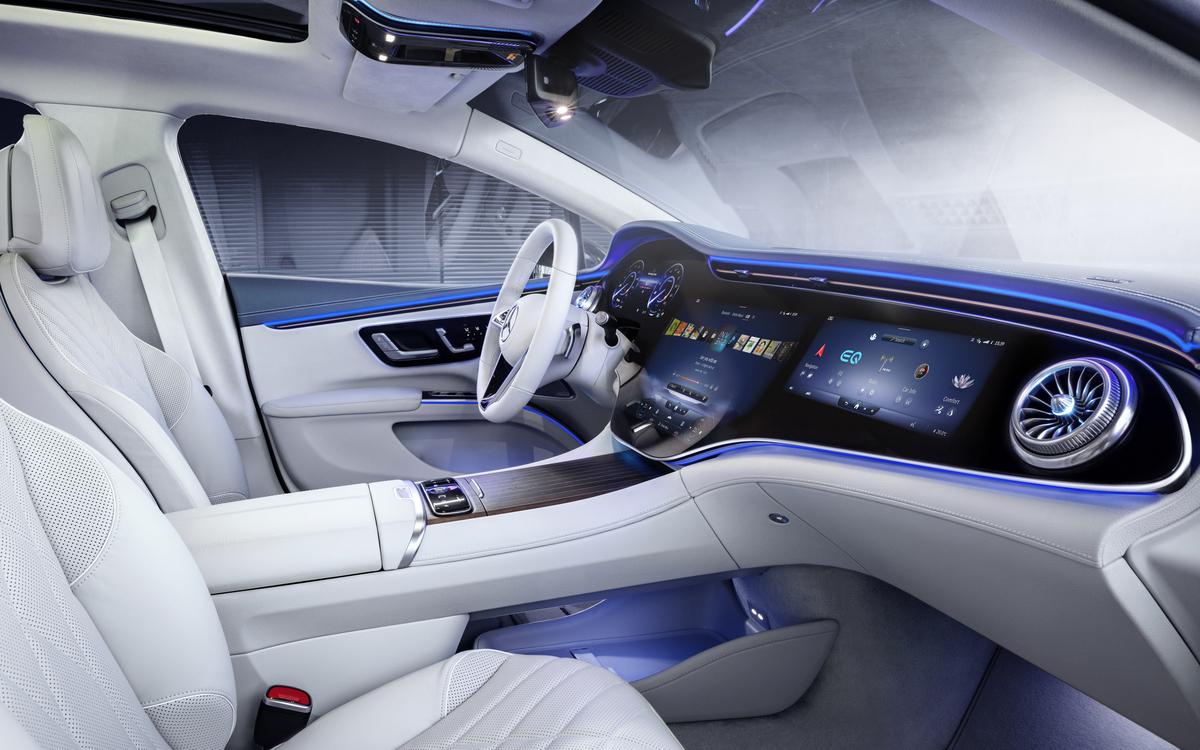
Although the EQS is a close relative of the new S-Class, it is built on an all-electric architecture. This new concept made a rigorous Purpose Design possible: with its one-bow lines and cab-forward fastback design. One-bow lines design is a coupe-like silhouette, created in conjunction with the sportily low and slim front. The cab-forward design at the rear where the overhangs and the front end are short, and the rear is smoothly rounded. The EQS is the first production car with a Cd value starting from 0.20. It thus makes use of the advantages of the purpose design. 8 CPU cores, 24 GB RAM and 46.4 GB per second RAM memory bandwidth are some of the MBUX technical data.
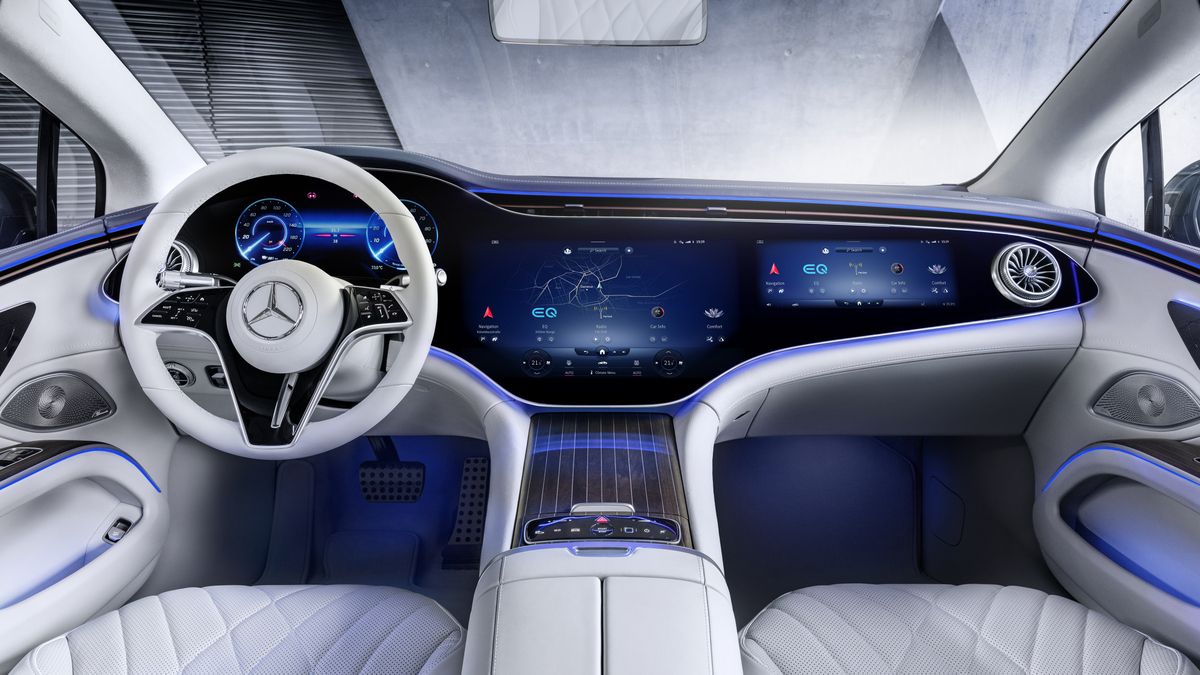
With the MBUX Hyperscreen (optional), three displays merge almost seamlessly into one another to create an impressive screen band over 56 inches wide: The driver display (screen diagonal: 12.3 inch), central display (17.7 inch) and front passenger display (12.3 inch) appear as one visual unit. The real glass appears to drape itself in three dimensions over the entire width of the vehicle like a wave. The large glass covering the MBUX Hyperscreen is curved in three dimensions in a molding process at temperatures of approx. 1202°F.
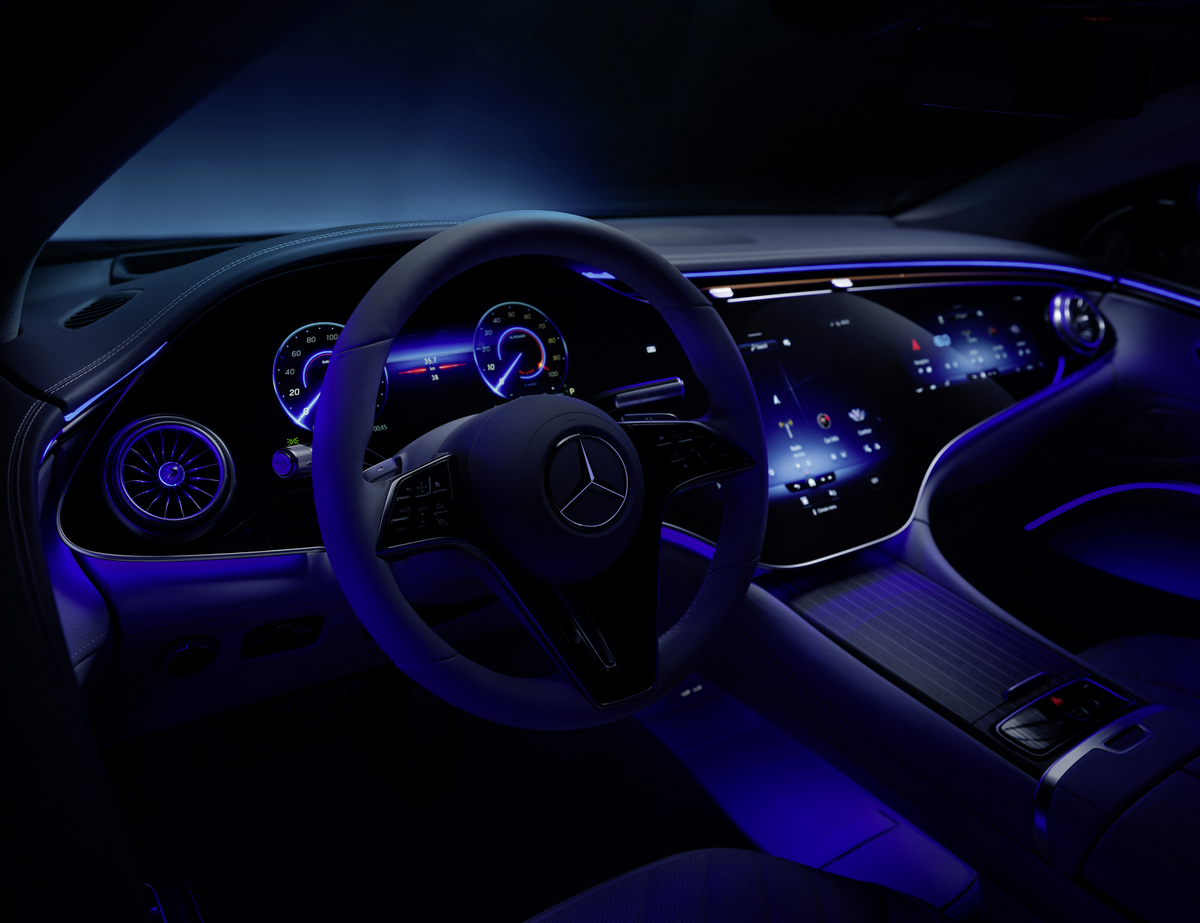
The MBUX Hyperscreen is surrounded only by a thin silver shadow frame, a vent band and a narrow leather frame, reminiscent of the lower volume body of classic instrument panels. The vent band spans across the entire width at the top and is very slim at the same time. The dominant outer vents have a turbine design. They deliberately play on the theme of hyperanalogue through the contrast between high-tech precision mechanics and the digital, glass display world.
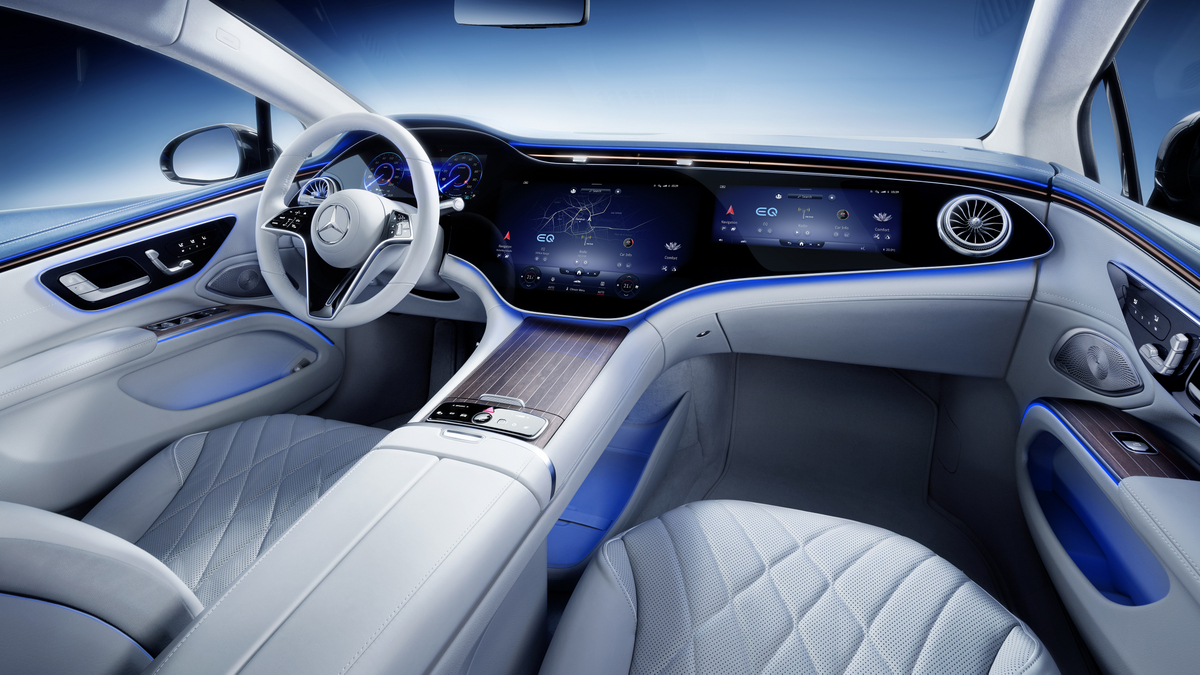
The outer vents contain intricately designed turbine blades to distribute the airflow efficiently. The brightness of the MBUX Hyperscreen is adjusted to the ambient conditions using the measurement data from 1 multifunction camera and 1 additional light sensor. With up to seven profiles, the display area of the MBUX Hyperscreen for the front passenger can be individualized.
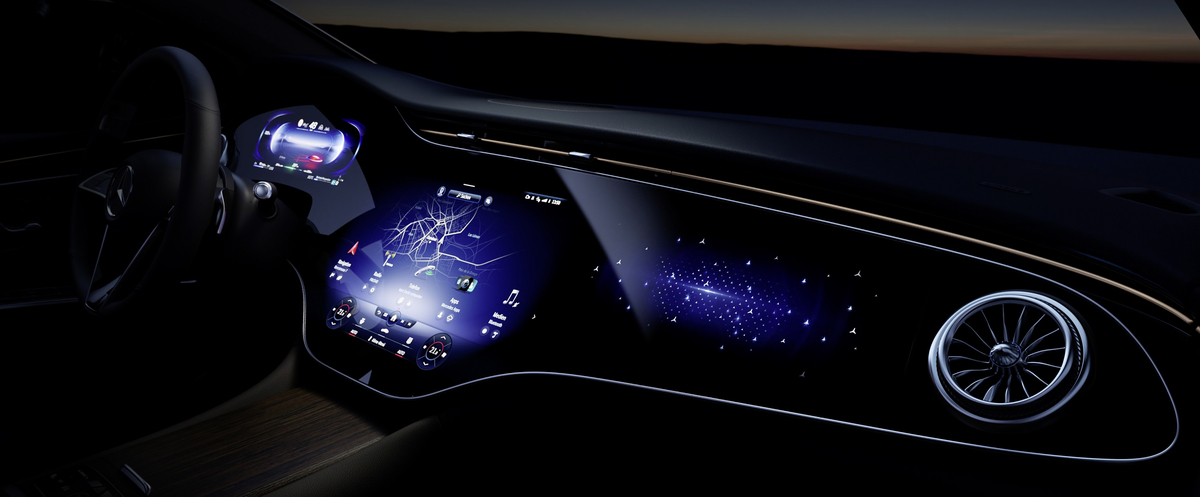
The control panels for the automatic climate control system are located in the lower area of the central display. These remain permanently displayed so that the driver and front passenger can directly adjust the temperature and ventilation. The central and front passenger displays also provide haptic feedback. When a finger touches certain spots on the touch screen, actuators (eight in the central display, four in the front passenger display) trigger a perceptible vibration on the cover glass. If the front passenger seat is not occupied, the screen becomes a digital decorative image. The customer can choose from various decorative patterns, including a starry sky or the Mercedes-Benz Star pattern.
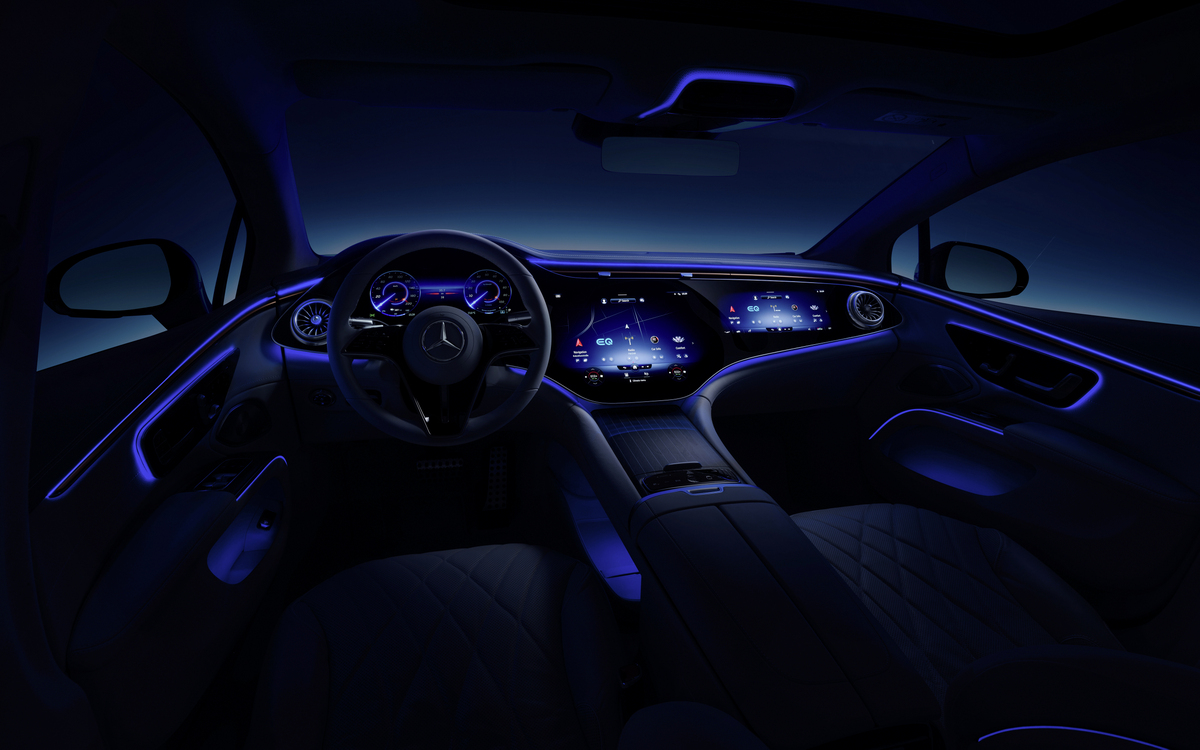
The front section of the center console connects to the instrument panel and stands freely in space. Flowing leather surfaces with intricate seam patterns create storage space in combination with a large cover made of real wood. The Electric Art design and equipment line includes the comfort seats. Wrap-around surfaces in the side bolsters provide the body support and stand in stark contrast to the seat center panel. It has a sophisticated seam pattern inspired by a fan palm. In combination with the AMG Line interior, the EQS is equipped with sport seats. They are characterized by a slim and monolithic shape. The seat surfaces are designed in such a way that they give the impression of draped-on leather blankets.

The design of the door panels borrows from the interior design of modern living spaces. The doors and their center panels emerge from behind the MBUX Hyperscreen to span the space. A surface-mounted modular body floats like a sideboard in front of the door panel. It accommodates all necessary door elements such as the armrest, door module, pull handle and side pocket. Circular ambient lighting completes this floating, avant-garde aesthetic in the dark.
EQS sound experiences include a variety of soundscapes that allows for an individual acoustic set-up. With the standard equipped Burmester® surround sound system, the EQS comes with the two soundscapes named Silver Waves and Vivid Flux. Silver Waves is a sensuous and clean sound. Vivid Flux is crystalline, synthetic yet humanly warm. They can be selected or switched off as sound experiences on the central display. The additional soundscape Roaring Pulse can be activated as an over-the-air update. This sound experience is reminiscent of powerful machines, creating a sonorous and extroverted feel.

Driver and passengers are greeted acoustically when approaching the vehicle and when getting in. A corresponding aura sound also accompanies exiting and locking the EQS. At the same time, the driving sound is interactive, as it responds to a dozen parameters such as the accelerator position, speed or recuperation. The choice of drive program also influences the driving sound; in SPORT mode, for example, the sounds become more dynamic and further effects are activated. Intelligent sound design algorithms calculate the sounds inside the amplifier of the Burmester surround sound system in real time, and the loudspeakers reproduce them.
Discover more from SNAP TASTE
Subscribe to get the latest posts sent to your email.



